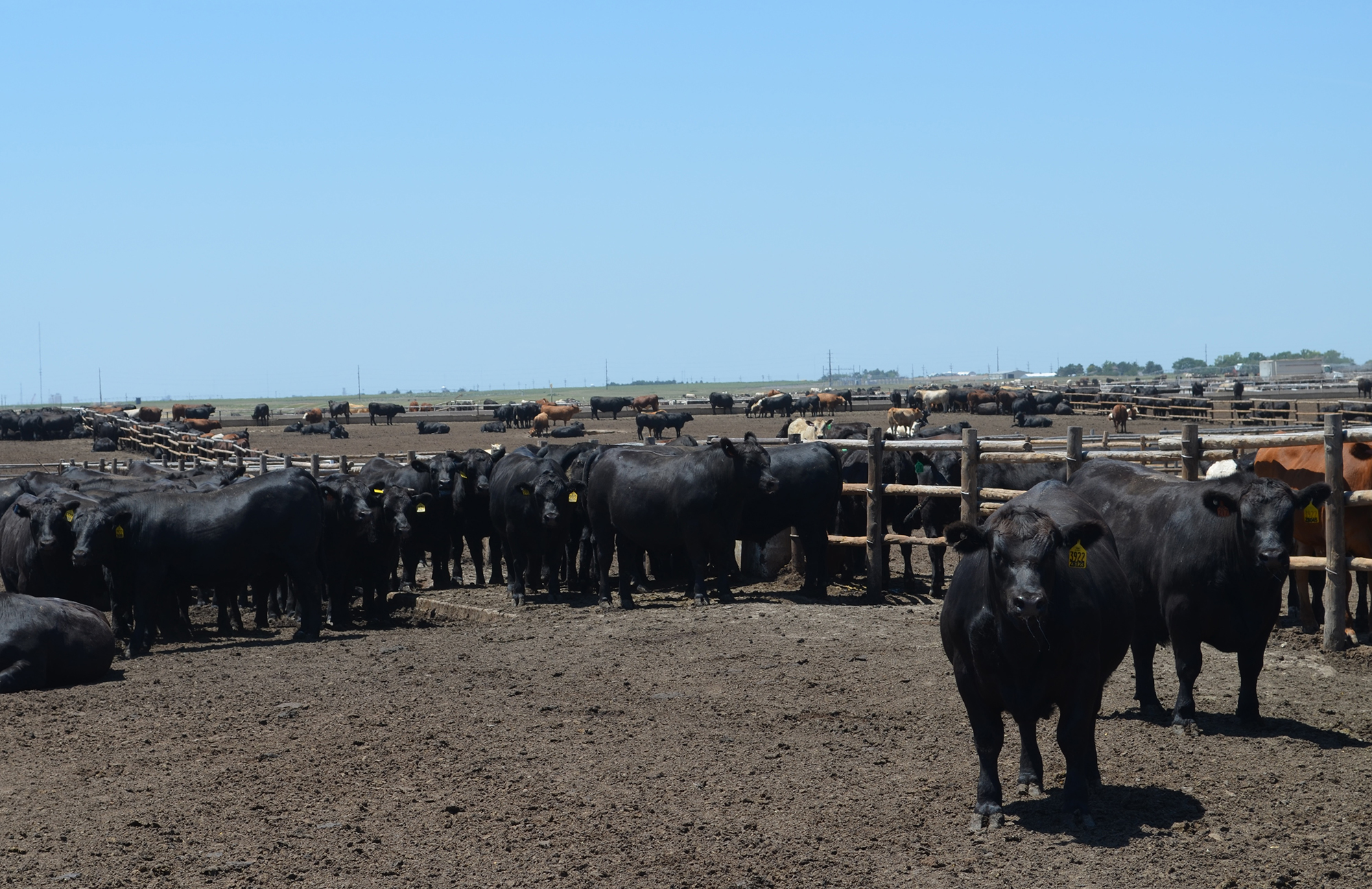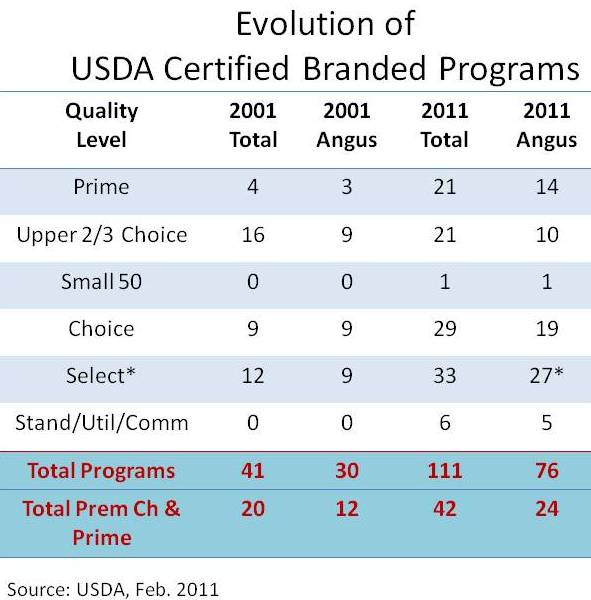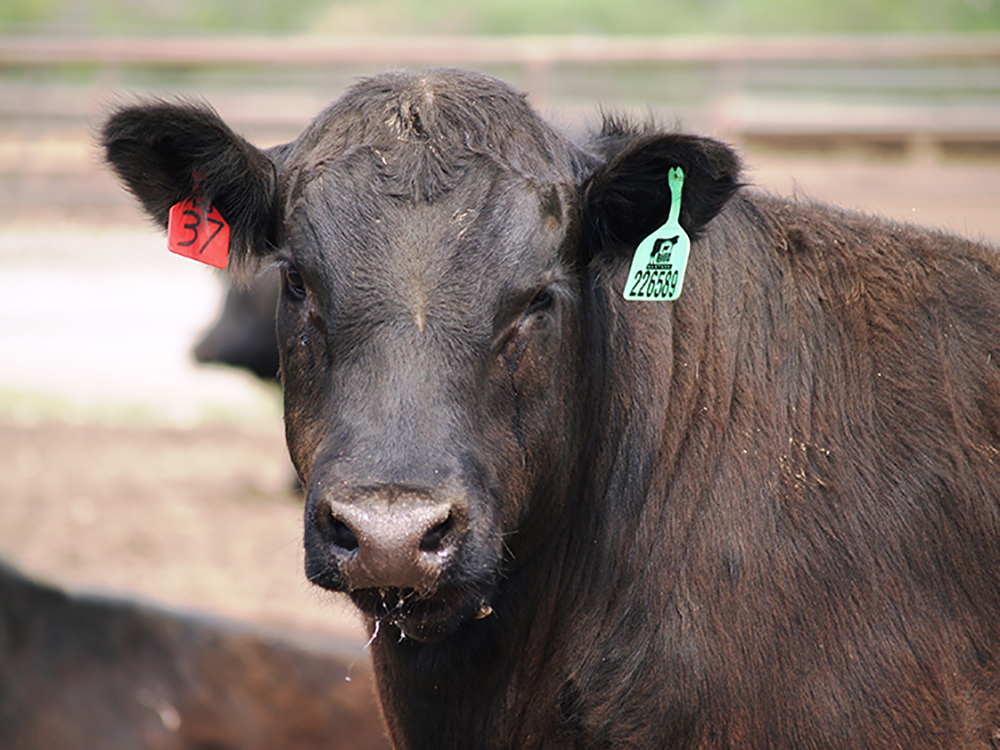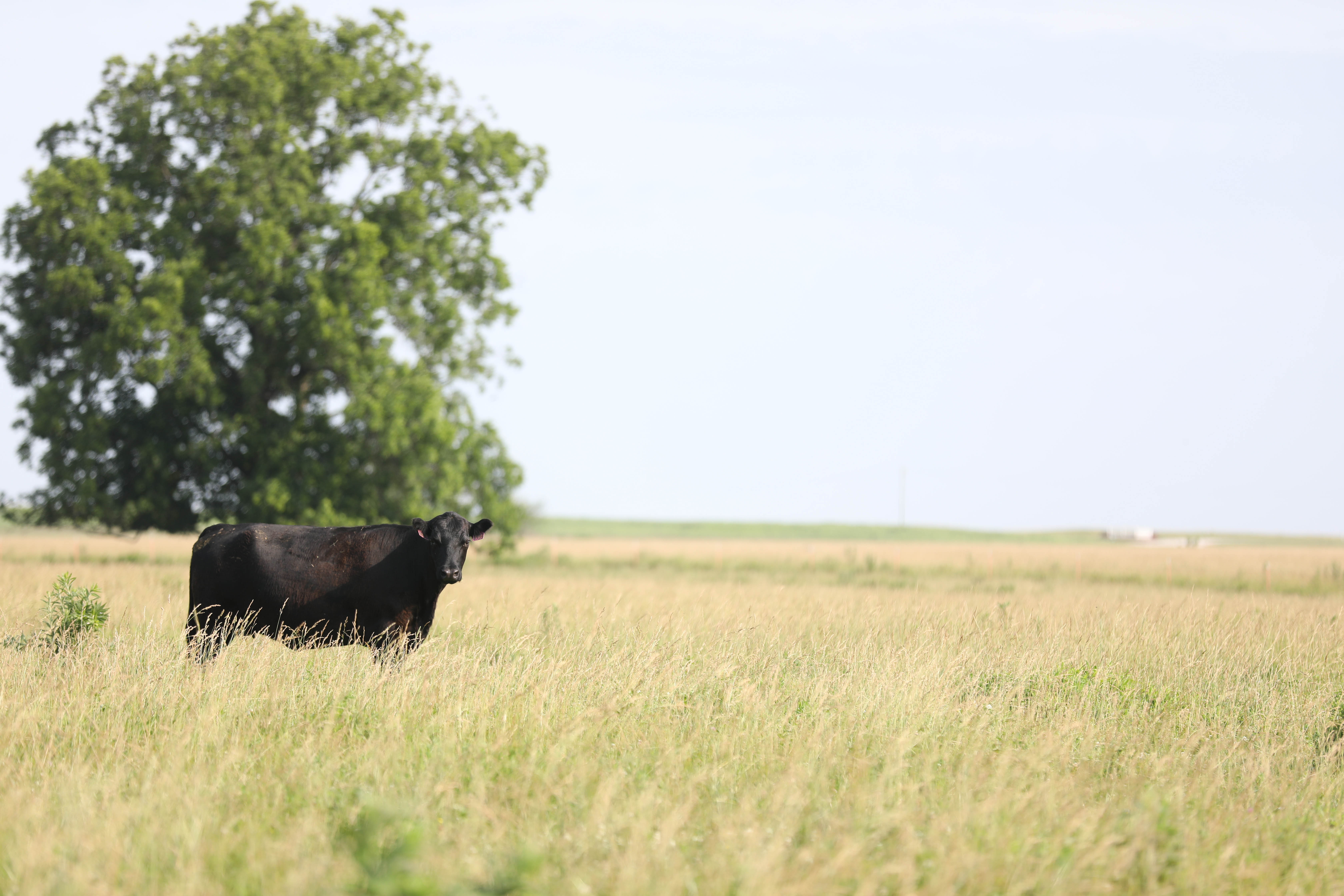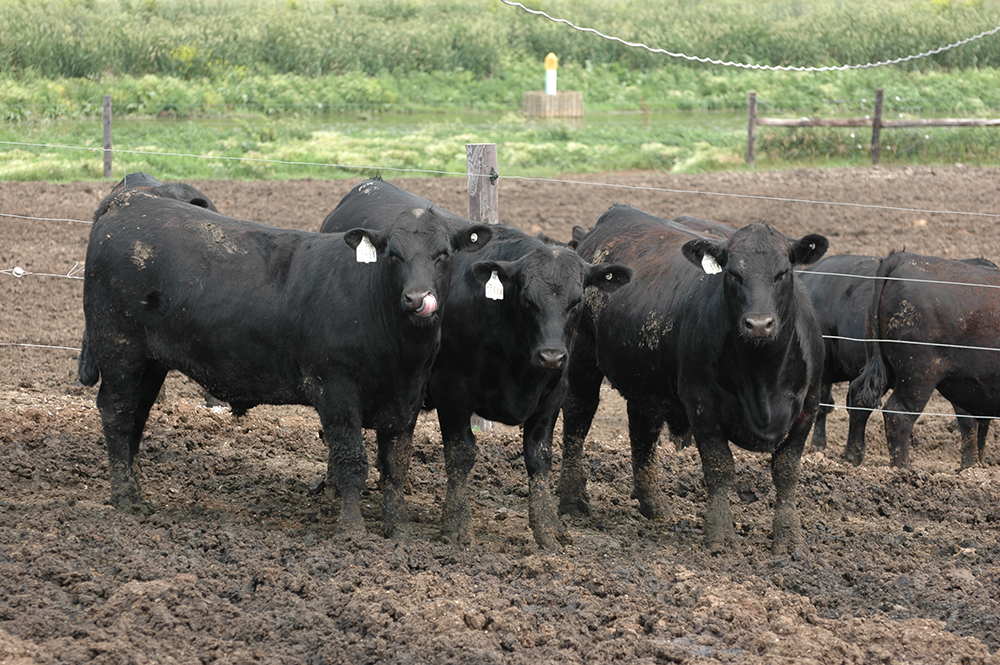
CARCASS DATA THAT MATTERS, PART II
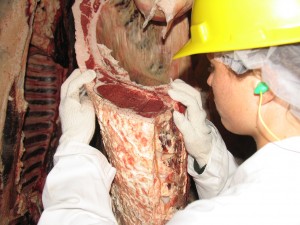 Muscling, primarily represented as ribeye area in carcass data, is an important element for producers to focus on.
Muscling, primarily represented as ribeye area in carcass data, is an important element for producers to focus on.
“This is a concrete measure of the size of one of the most valuable cuts of a beef carcass and, while not perfect, it’s a good indicator of overall carcass muscle content,” Paul says. “It’s most important when selling cattle on a carcass value-based system to maintain enough ribeye size in order to avoid Yield Grade discounts.”
Yield Grade is a measure of the relationship of subcutaneous fat to red meat yield. So, we’re shooting for more red meat yield and less subcutaneous fat and, consequently, larger ribeye areas.
The USDA grading service has a formula that indicates that a carcass of a certain weight should also have a ribeye area of a certain size. For instance, an 850-pound carcass should have a 14.0-inch ribeye. Any deviation from that 14.0-inch size will either indicate a higher than average amount of overall carcass muscling or a lower than average amount of muscling.
Consequently, the Yield Grade assigned to that carcass will reflect the positive or negative deviation from “average” and the producer will either receive a premium or a discount if the deviation is enough to warrant such an adjustment.
A cow-calf producer should strive to keep ribeye size somewhere between 12 to 16 inches, with the optimum being 12 to 14 inches for the end-users of our product.
Paul points out that restaurants and retailers generally favor ribeyes smaller than 14 inches, but he is not aware of a value-based payment system offered by any of the major packers that rewards the seller for these somewhat smaller ribeyes.
The Certified Angus Beef® brand requires ribeye size to be between 10 and 16 inches to qualify for the brand, so we’ve set a limit on both the lower and upper end of the scale to try to control variation in the size of important beef cuts.
Muscling also impacts dressing percentage, which measures final hanging carcass weight as a percentage of live weight. Higher muscle content, as well as subcutaneous fat content, positively impact dressing percentage. Higher dressing percentages mean more hanging weight which will be paid for on a grid pricing system. In the end, producers should strive to include muscling as criteria in selecting genetics, without going overboard, and while maintaining a balanced approach to evaluating all traits.
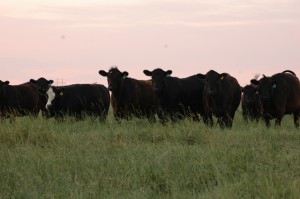
Paul explains that there is a diminishing point of returns at the ranch, where extremely heavily muscled cows will not re-breed and are inefficient. Therefore, balance is the key.
While backfat can have a significant impact on fed cattle value, Paul doesn’t think it’s an appropriate area to focus on when making herd decisions.
“I believe that the cow-calf producer’s job is to apply pressure to maintain muscling, which impacts Yield Grade directly, instead of selecting against backfat,” he says.
Indeed, less backfat has a positive impact on Yield Grades, but it also has a potential negative impact on cow efficiency and fertility.
“I think we have more important things to place focus on than backfat when using EPDs and Indexes, as long as the backfat EPD isn’t extremely high,” Paul says. “As well, if we get enough muscle in our cattle and manage their condition at the feedlot through nutrition and marketing cattle ‘on time’ when they reach 0.55 inches of backfat thickness, on average, we won’t have to worry about Yield Grade.”
Any questiongs about how to apply carcass data that we didn’t cover? Leave us a comment and we’ll get you the answer!
You may also like
$100,000 Up for Grabs with 2024 Colvin Scholarships
Certified Angus Beef is offering $100,000 in scholarships for agricultural college students through the 2024 Colvin Scholarship Fund. Aspiring students passionate about agriculture and innovation, who live in the U.S. or Canada, are encouraged to apply before the April 30 deadline. With the Colvin Scholarship Fund honoring Louis M. “Mick” Colvin’s legacy, Certified Angus Beef continues its commitment to cultivating future leaders in the beef industry.
Raised with Respect™ Cattle Care Campaign Launched This Fall
Raised with Respect™ was developed as part of a strategic cattle care partnership between Sysco and CAB. The collaboration focuses on supporting farmers and ranchers, equipping them with continuing education to stay current on best management practices and helping to increase consumer confidence in beef production.
Quality Wins, Again
Sara Scott, Vice President of Foodservice for Certified Angus Beef, emphasizes the importance of taste over price in the beef market during the Feeding Quality Forum. As consumer demand for high-quality beef grows, Scott highlights the need for increased supply and encourages communication with packer partners to meet the demand for Prime beef.





